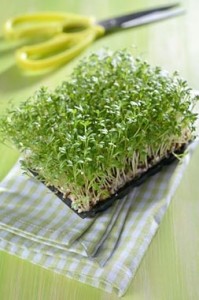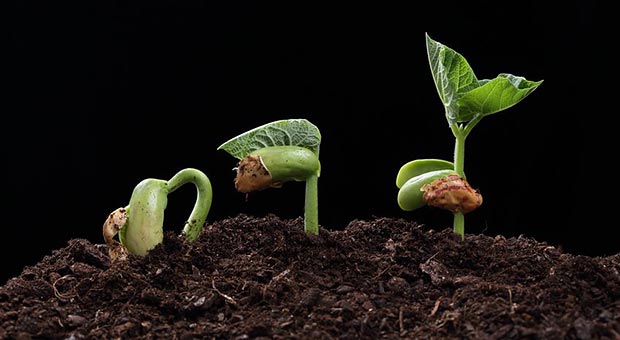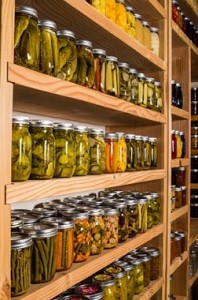Just because you live in an apartment or a small house with minimal yard space doesn’t mean that you can’t grow your own food.
For that matter, you may even be able to have a few animals. Chickens or a goat or two may be a possibility right in your own yard. The important things to growing food for survival in small places are organization and creativity.
We’ve gathered some tips that may help!
Use Non-GMO, Non-Hybrid Seeds
GMO, or genetically modified organisms, are genetically fused into some seeds in order to make the plant more disease-resistant. GMO’s are linked to many illnesses in humans and the government has conveniently failed to regulate the use of them so that growers don’t even have to tell you that you’re eating GMO’s.
You can order seeds that have been tested and are guaranteed to be non-GMO.
Likewise, don’t use hybrid seeds; they aren’t stable. They’re genetically created from two parent plants to have certain traits. The result of the cross will be a vigorous yield with plants that exhibit those traits.
The problem, though, is that only the first generation will definitely have those traits so you can’t use the seeds from them to grow identical plants. Both the second-generation yield and the traits of the resulting plant are anyone’s guess.
Go with heirloom or open-pollinated, certified non-GMO seeds.
Save Your Containers
You’re going to need containers to plant your seeds and grow your plants in. Yogurt and fruit cups, milk jugs, soda and water bottles and coffee cans are all great planting vessels and cost you nothing. Plus you’re repurposing something that may just end up in a landfill.
Practice Container Gardening
 Even if you live in an apartment, you most likely have at least one or two windows and possibly even a balcony. That means that you have plenty of light to grow fruits and veggies in containers.
Even if you live in an apartment, you most likely have at least one or two windows and possibly even a balcony. That means that you have plenty of light to grow fruits and veggies in containers.
Vegetables that require little space and are great for window boxes include carrots, radishes, lettuce, onions, and even tomatoes and peppers.
Herbs are great, too, but since they grow in just about any area of your house, don’t waste window space if you want to grow other things.
The only limitation that you have is the size of your container. If you have space, you can even grow small fruit trees or berry bushes.
Strawberries grow wonderfully in pots and you can even hang them so that they’re out of the way.
Hanging baskets, pots, window planters, barrels, buckets and even cups can serve as containers in which to grow your favorite herbs, veggies and fruits.
Plant a Small Outdoor Garden
If you have a spot that’s at least 4’X4’, you can grow a small garden. Dig out a spot that’s one foot deep and no more than 4 feet wide so that you can get to the center of it easily. Line the hole with plywood so that your soil is contained in the box.
Fill with rich soil. You might be able to skip this step if your soil is already good. You can make your garden as long as you’d like. 4’x12’ is a good, workable space for a beginner.
Create furrows in your soil so that you have 4 long mounds that run lengthwise with furrow in between that are about 6 inches or so lower than your mounds. Plant your seeds on the mounds.
You can grow whatever you’d like but be careful because some plants complement each other and others will steal nutrients from the soil that will stunt other plants. Do your research. Also, some plants have deep roots (ie, tomatoes) while some have practically no roots (lettuce). Grow these close together in order to utilize your space well and you’ll have extra food to add to your survival stockpile.
Preserve Your Food and Your Food Sources
Remember, this garden is for survival purposes as well as personal, immediate enjoyment.
Grow enough extra so that you may can it or dehydrate it for your stockpile.
Save seeds so that you can keep your garden growing. If you do that, your seeds will quite literally be free the second time around, plus you’ll have your own viable seeds if SHTF.
Raising Chickens or Small Animals
Depending upon local ordinances, you may be able to have small animals such as goats or even chickens in your yard. If you’re in an apartment, chances are pretty good that you’re out of luck, though. That doesn’t mean that you can HAVE some animals in case SHTF.
See if you can work with local farmers to keep a few animals on their property for survival purposes.
Growing food for survival in small places is challenging but you do have options. If you’re in an apartment, you may also be able to use the roof or the front steps to grow herbs or other plants. If you’re worried about people stealing your fruit or veggies, use these spots to grow things such as onions, potatoes, or herbs that may not be easily recognizable as edible plants.
As with everything, it doesn’t matter how small you start, just start! Your survival may depend upon how well you prep today!

Photo sources: 123RF.com




















































































Also, take your bag of garden soil, lay it down, cut a rectangle out of it and it is ideal for planting lettuce and spinach. There is also certain types of lettuce that will grow even in cold weather and is also open pollinated (non GMO/non hybrid) so you can let go to seed to harvest for future gardening. Also make sure your garden survival kit has additional vegetable fertilizer to keep gardens going when SHTF
DON’T FORGET THE LOWLY SUNCHOKE, WHICH PRODUCES WONDERFUL TUBERS. IF MULCHED, THESE CAN PROVIDE A GREAT SOURCE OF FOOD ALL THROUGH WINTER, WHEN THERE’S NOT MUCH ELSE AVAILABLE, AND WELL INTO SPRING. A SUNCHOKE PATCH WILL TAKE CARE OF ITSELF BUT STILL BE THERE IF NEEDED, AND THEY HAVE A NICE NUTTY FLAVOR TOO! THE SUGARS IN THEM ARE PARTICULARLY GOOD FOR DIABETICS IF THE SHTF.
Another tip for apartment dwellers. You may be able to keep a pair of rabbits in a wire dog crate. They are clean, make no obnoxious noises. They multiply easily and can eat a variety of easily grown greens. Alpha is their favorite.
Don’t forget sprouts. Easy to grow in a few days. Dont even really need sunlight.